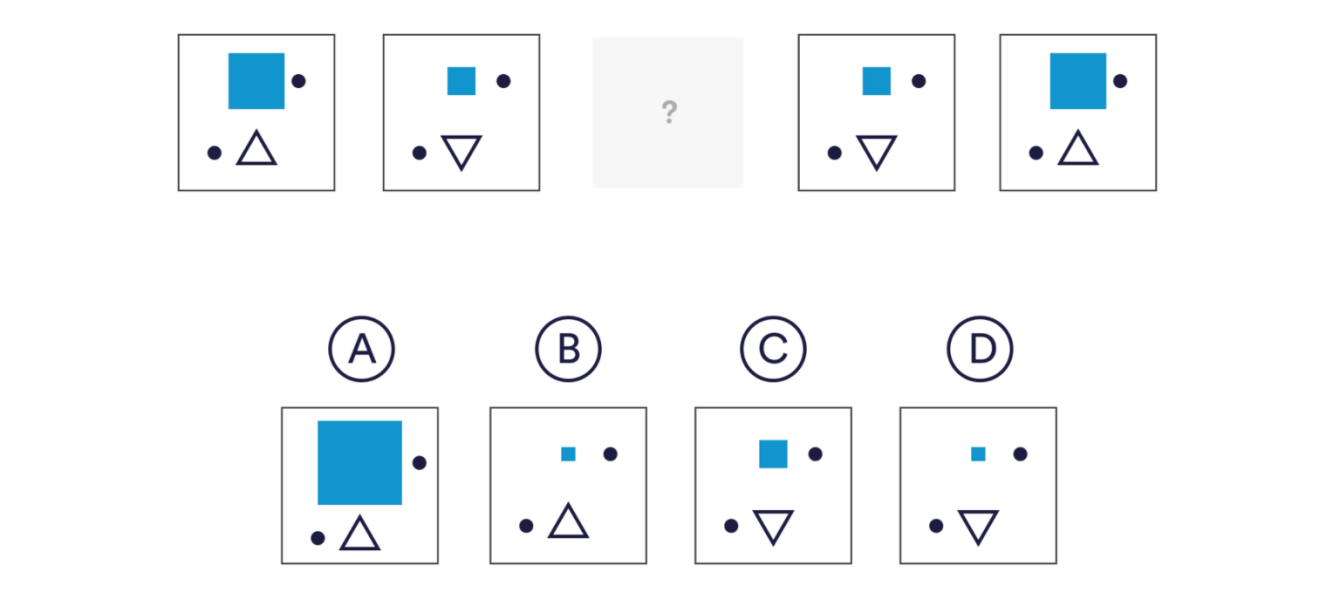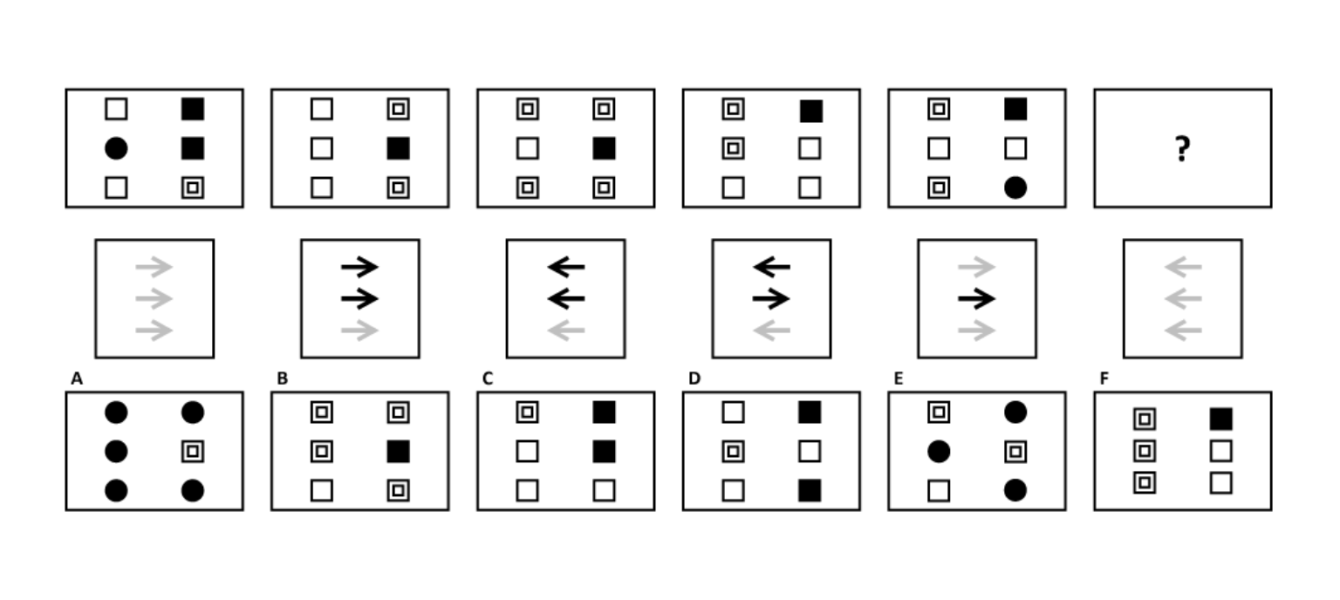Free Logical Reasoning Test Sample Questions & Answers
Logical reasoning tests are a form of psychometric test that assess your ability to interpret information and apply that knowledge to come to a conclusion. Typically, no prior knowledge is required for a logical reasoning test, since it evaluates your ability to use logic to solve a problem.
There are several types of logical reasoning tests, each assessing a slightly different skill:
Inductive reasoning: requires you to look for rules between the shapes or diagrams, and use this to determine the next item in the sequence, or the missing item from the sequence.
Deductive reasoning: requires you to analyse information, and use this to make the correct logical conclusions.
Diagrammatic reasoning: presents you with a series of diagrams and symbols, and requires you to identify a rule and apply this to reach the right conclusion.
Abstract reasoning: similar to diagrammatic and inductive reasoning, abstract reasoning presents you with visual sequences, from which you will need to infer rules to identify the next item or missing item.
Critical reasoning: You will be given a passage of information, and will be required to use logical thinking skills to evaluate it and make a judgement.
Although no existing knowledge is required for logical reasoning tests, practicing sample questions will improve your ability to tackle these tests.
Why not practice with some free sample questions below? And don’t forget to review your answers with the solutions at the bottom, to see how each answer is reached.
Sample inductive reasoning test question
Identify the pattern and work out which one of the suggested images would complete the sequence.
Sample deductive reasoning test question
Owen left a tray of lemon cakes unattended in the staff room for an hour and one of the cakes went missing. Maggie, Susan and Mark have all been accused of eating the treat. After questing you learn that:
Maggie is allergic to citrus but was seen leaving the staffroom at lunchtime.
Susan’s favourite type of cake is lemon but wasn’t seen anywhere near the staffroom.
Mark has stolen cakes from the staffroom before and more cakes have gone missing since Mark started.
Who can you infer is most likely to have taken the lemon cake?
- Maggie
- Susan
- Mark
Sample diagrammatic reasoning test question
The bottom boxes create a rule that has to be applied in the box directly above them. Select which of options A to F corresponds to the rule below the box with the question mark.
Sample abstract reasoning test question
Which of the boxes comes next in the sequence?
Sample critical thinking test question
Is the inferred statement true, false, or impossible to deduce, based on the statement below?
Statement : The UK Government has published data that shows 82% of people under the age of 30 are not homeowners. A charity that helps homeless people has published data that shows 48% of people that are considered homeless are under 30.
Inferred statement: The lack of affordable housing on the sales market is the reason why so many under-30s are homeless.
- Definitely true
- Probably true
- Impossible to deduce
- Probably false
- Definitely false
Answers & Solutions
Sample inductive reasoning test question
Answer: B
Solution: The first thing you can identify is that the triangle is alternatively flipping vertically, ruling out C and D. The only difference between A and B is the size of the square.
To maintain a sequential pattern, B must be correct: the square grows in size and then shrinks as it progresses along the sequence.
Sample deductive reasoning test question
Answer: C) Mark
Solution: Given what we have learned, it is reasonable to assume that Mark is the culprit. The facts about Maggie and Susan might help in forming a deductive argument, but in this context they are inconsequential. Mark’s pattern of behaviour indicates that he is guilty.
Sample diagrammatic reasoning test question
Answer: E
Solution: The simple rule in this question is that the number of grey arrows in the box below must equal the number of black shaded shapes in the box above. There are three grey arrows below the missing box, so the correct answer must contain three black shapes.
Sample abstract reasoning test question
Answer: A
Solution: The arrows change direction from pointing up, to down, to right, then to left with each turn. Circles increase by one with each turn.
In the fifth box the arrow is pointing up and there are five circles, so the next box must have the arrow pointing down, and have six circles.
Sample critical thinking test question
Answer: Impossible to deduce
Solution: The statement does not provide enough information to judge if the inferred statement is correct or not.
Further practice
If you’re looking for more about getting to grips with logical reasoning tests, check out our articles on 10 tips for passing logical tests, and 10 ways to prepare for a logical reasoning test.


